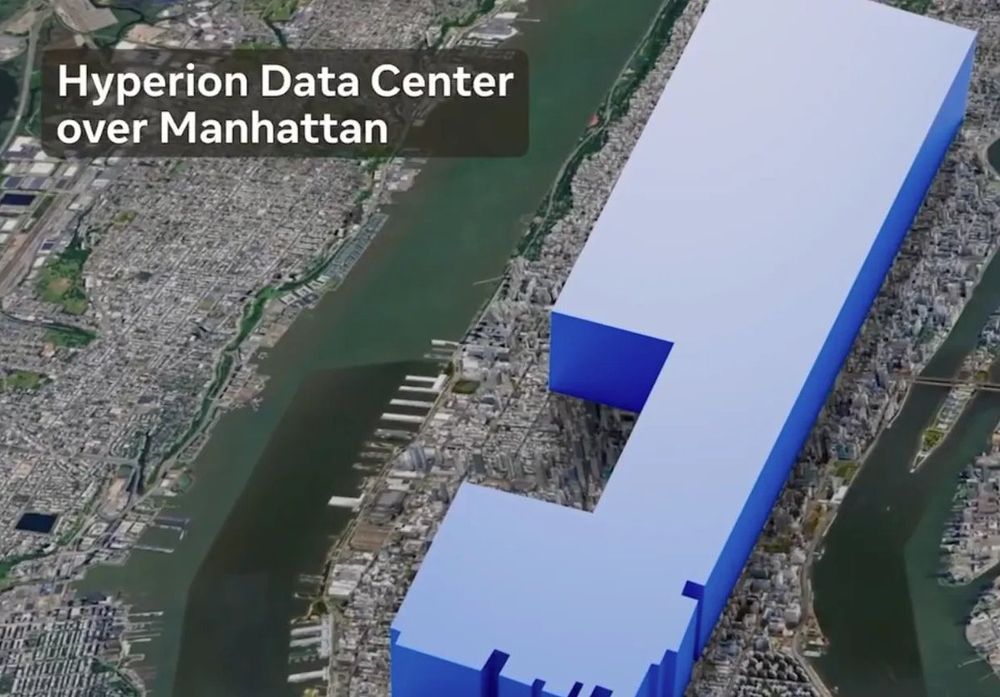Thanks for sharing, David!
28.10.2025 02:06 — 👍 0 🔁 0 💬 0 📌 0

Why Are Electricity Prices Rising?
Probably not for the reasons that you think
Here's a really great, clear explanation from @michael-thomas.bsky.social of what we know about why US electricity prices are rising. (No, it's not data centers, except in some very specific local areas.)
24.10.2025 17:36 — 👍 149 🔁 49 💬 9 📌 5

Rooftop Solar Could Save Americans $1 Trillion Dollars
But we have to make it easier to permit and install
We could save more than $1 trillion nationally and cut utility bills for the average household by $1,600 per year by streamlining permitting of rooftop solar. No federal policy needed -- this can all be done by cutting red tape at state and local level. @michael-thomas.bsky.social 1/
27.10.2025 16:37 — 👍 144 🔁 44 💬 12 📌 1
In this world, I think we’d all be wise to form our opinions more slowly and be skeptical of what we read.
I'm planning to publish a full summary of the report and what it says about the real reasons for rising electricity prices in my newsletter tomorrow.
22.10.2025 16:43 — 👍 5 🔁 0 💬 1 📌 0
Affordable and reliable electricity is the bedrock of modern civilization.
But in a world of hot takes, disinformation, and AI-generated deepfakes, it’s easy to overlook what makes electricity cheap and what makes it expensive.
22.10.2025 16:43 — 👍 2 🔁 0 💬 1 📌 0
With the chart above, it’s easy to imagine a virtuous cycle where:
- More people buy EVs and heat pumps
- Electricity demand grows, and prices fall
- Cheaper operating costs encourage more adoption
22.10.2025 16:43 — 👍 3 🔁 0 💬 1 📌 0
But the data shows that rising demand for electricity doesn't need to result in higher prices. And that's a really good thing from my perspective.
Mitigating climate change will require "electrifying everything." And that will result in a lot more electricity demand.
22.10.2025 16:43 — 👍 3 🔁 0 💬 1 📌 0
All of this is from a new report by LBNL.
The report makes clear that this relationship is not guaranteed to exist in the future or everywhere.
More recently data centers have led directly to rate increases (e.g. the recent PJM auction).
22.10.2025 16:43 — 👍 2 🔁 0 💬 1 📌 0

In Virginia—home to the world’s largest concentration of data centers—rising electricity consumption from data centers actually prevented prices from rising as much as they otherwise would have between 2019 and 2024, according to the report.
22.10.2025 16:43 — 👍 1 🔁 0 💬 1 📌 0

North Dakota is the only state in the US that didn’t see its electricity prices rise between 2019 and 2024.
Over that period, rates actually fell in inflation-adjusted terms.
22.10.2025 16:43 — 👍 1 🔁 0 💬 1 📌 0
In North Dakota, crypto and AI companies have driven some of the fastest electricity demand growth in the country.
You might expect the state to have seen the fastest growth in utility bills. But intuition would fail you.
22.10.2025 16:43 — 👍 1 🔁 0 💬 1 📌 0

This was surprising to me:
In states with the highest electricity demand growth—from sources like data centers—electricity prices actually fell over the last 5 years.
Totally opposite of the prevailing narrative that data centers raise electricity prices.
🧵
22.10.2025 16:43 — 👍 7 🔁 2 💬 3 📌 1
Glad to hear you think so! GIS is powerful. Everything in the story is just using basic Google Earth and historical images.
16.10.2025 16:40 — 👍 2 🔁 0 💬 0 📌 0

These Data Centers Are Getting Really, Really Big
Gigawatt-sized data centers are becoming the new normal
This thread is getting long, so I'll leave it there for now.
I wrote more about all this in my latest newsletter. You can read the full story here:
www.distilled.earth/p/these-data...
16.10.2025 14:52 — 👍 2 🔁 2 💬 1 📌 0

Meta is also working on a data center in Louisiana that would be twice the size of its Ohio data center.
The floorspace will be about half the size of lower Manhattan.
At peak power, Hyperion will consume about half as much electricity as the entire city of New York.
16.10.2025 14:52 — 👍 7 🔁 4 💬 1 📌 1

To build its first 1 GW data center, Meta is sticking thousands of $60k NVIDIA GPUs in tents in Ohio.
That might sound crazy, but it's cut the time to build in half. The first few buildings at its site in Ohio took 2-3 years to build.
The tents will take less than a year.
16.10.2025 14:52 — 👍 3 🔁 1 💬 1 📌 0

The only hyperscaler that isn't working on a giga-scale data center in the US is Google.
Instead, they've built a distributed cluster of 4 data centers connected by fiber on the border of Nebraska and Iowa. By 2026, the cluster will have 1 GW of capacity.
16.10.2025 14:52 — 👍 4 🔁 1 💬 1 📌 0
Microsoft recently announced the first phase of its Mt. Pleasent, WI data center. It will eventually use 1.5 GW, according to the grid operators documents.
xAI is working on Colossus 2, which will eventually use 1.5 GW of power.
16.10.2025 14:52 — 👍 2 🔁 0 💬 1 📌 0

Stargate isn’t the only gigawatt-scale project progressing quickly in the US either.
Amazon recently finished the first phase of a data center in Indiana that will eventually use 2.2 GW of power.
The first phase (525 MW) took a bit more than a year to build.
16.10.2025 14:52 — 👍 2 🔁 0 💬 1 📌 0

Another way to understand the scale of the project is to compare the 1.2 GW of peak demand the facility will use to that of one of the nearest utilities.
El Paso Electric, a utility that serves 465,000 customers west of the project, has a peak system load of 2.4 GW.
16.10.2025 14:52 — 👍 3 🔁 0 💬 1 📌 0

It’s hard to really put the scale of this project in perspective. One way to do it is to look at the project from space.
The satellite image below shows Stargate’s first two buildings. Each of those tiny little dots is a construction worker's car. There are 6,000 of them.
16.10.2025 14:52 — 👍 4 🔁 0 💬 1 📌 0

OpenAI’s Stargate data center in Abilene, Texas is one such project.
Just over a year ago, the project was nothing more than some permits and a few hundred acres of dirt in West Texas. Today there are 100,000 of NVIDIA’s most advanced chips consuming 200 MW of power.
16.10.2025 14:52 — 👍 3 🔁 0 💬 1 📌 0
I’ve been skeptical of the AI power demand story at times.
But in the years since I first started writing about it, many AI infrastructure projects have gone from the realm of press releases to actual operating projects.
And they’ve done it at breakneck speed.
16.10.2025 14:52 — 👍 4 🔁 0 💬 1 📌 0

Since the launch of ChatGPT in November 2022, tech companies have spent huge sums of money building data centers.
In just three years, spending on data centers in the US has gone from $13.8 billion to $41.2 billion per year—an increase of 200%.
16.10.2025 14:52 — 👍 6 🔁 2 💬 1 📌 0

These Data Centers Are Getting Really, Really Big
Gigawatt-sized data centers are becoming the new normal
For the last few months I've been going through public documents, permits, and satellite images to track the largest data centers in the US.
Today I published the first story about what I've learned.
🧵
www.distilled.earth/p/these-data...
16.10.2025 14:52 — 👍 64 🔁 35 💬 3 📌 7

The Senate is about to destroy clean energy to give tax cuts to billionaires
The bill could pass within the next 24 hours.
Wanted to help amplify this post from @michael-thomas.bsky.social to my small group of followers. The fate of life on Earth is quite literally at stake. open.substack.com/pub/heated/p...
29.06.2025 20:21 — 👍 25 🔁 15 💬 0 📌 1

URGENT: The Latest Senate Bill Is Worse Than Climate Advocates Thought Possible
The bill could pass the Senate in the next 24 hours
I just published a story with @emorwee.bsky.social about the latest Senate bill.
The bill is much worse than climate advocates thought possible.
The window to stop it is rapidly closing. But to do that climate advocates need to speak up.
www.distilled.earth/p/urgent-the...
29.06.2025 20:39 — 👍 64 🔁 39 💬 3 📌 2

The Senate is about to destroy clean energy to give tax cuts to billionaires
The bill could pass within the next 24 hours.
It’s so important to understand WHY the new Senate bill has such drastic provisions to kill renewable energy
Fossil fuel industry lobbyists and Big Oil-funded activists have been ALL OVER the GOP in recent weeks, telling them that clean energy jobs are “fentanyl jobs” and “a cancer”
29.06.2025 19:58 — 👍 659 🔁 359 💬 21 📌 24
climate tech reporter (aka ENERGY DOMINANCE reporter) at @heatmap.news | signal: katieb.40
📍 Seattle, WA
Democratic strategist. Formerly Long Island Campaign Chair for Barack Obama; Majority Leader of the Suffolk County Legislature. Gay dad of five terrific kids. Writer and producer of echoesoftheunknownpodcast.com. Coffee addict. New York/Florida.
Staff Writer, @Canarymediainc | Clean energy journalism and compassion enthusiast. Reporting on building decarbonization, home electrification, heat pumps, and workforce. Fan of yoga and wandering. Opinions: just mine. @alisontakemura
Works at Stanford on equitable climate and energy law/policy with a big helping of wildfire and insurance.
Sr. Director, Electrification @EnergyInnovLLC, Host of EectrifyThis! Podcast | Frmr: VP-Regulatory w/ @IRECUSA, Sr. Policy Associate w/
@UtahCleanEnergy
U.S. Senator from New Jersey.
Political economy of climate emergency. Assistant Professor of Sociology, UC Berkeley; Director, Socio-Spatial Climate Collaborative, or (SC)2; Founding Co-Director, Climate and Community Institute @cplusc.bsky.social. A Planet to Win (Verso). he/him
I cover infectious diseases for STAT (www.statnews.com). 2020 Polk winner. Nieman '11. She/her. I write about H5N1 (in all species), Covid, polio, flu, Ebola, RSV, mpox, STIs. Find me on Signal: HBranswell.01
Founder & (sometimes) CEO at 37signals (makers of Basecamp and HEY). Non-serial entrepreneur, serial author. Email me at jason@hey.com.
Climate solutions, information technology, critical thinking skills. Born at 318 ppm. https://www.koomey.com
climate policy, writer, social scientist, geographer
disaster lesbian on the apocalypse beat @wired.com . very tall with a very short dog. they/them. pitch me: molly_taft@wired.com, signal: @mollytaft.76. mollytaft.com
Work: Chief Science Officer @GallagherRe
Alumnus: Notre Dame (MSc: Business Analytics). Florida State (BS: Meteorology).
Healthy Obsessions: Weather & Climate Nerdery. Metallica. Notre Dame. Chicago Sports (Blackhawks, Cubs, Bears, Bulls).
Views: Mine
State-level energy transition advocate and regulatory nerd working in the Interior West. Opinions mine, all mine.
Co-founder and lead analyst, Centre for Research on Energy and Clean Air; senior fellow, Asia Society Policy Institute: tracking & accelerating progress from polluting energy to clean air, with research and evidence.
Reporter at The Washington Post. Listen to my series on John Brown: https://podcasts.apple.com/us/podcast/american-carnage/id1723391781
Climate, cities, equity & law. Sabin Center for Climate Change Law, Sustainable Cities Fund and some other places.✨ MKE & NYC. 📚: “Urban Climate Law”
Climate scientist & energy analyst @UtahCleanEnergy. #ElectrifyEverything #EnergySky #GreenSky 🔌💡. Posts my own.
Nonprofit newsroom. Media that builds power for working people.
Join us: https://linktr.ee/moreperfectunion
climate/Econ person on IG/Youtube/Tiktok but here it’s just pictures of my cat Blue

















